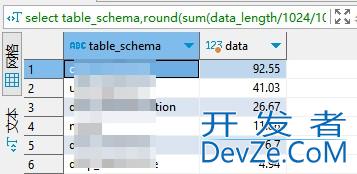Python结合Redis开发一个消息订阅系统
目录
- 1. 引言
- 2. 消息订阅的基本概念
- 3. 消息订阅的常见模式
- 4. 消息订阅的最优方案设计
- 4.1 消息代理的选择
- 4.2 消息的持久化
- 4.3 消息的分发机制
- 4.4 负载均衡
- 4.5 容错与恢复
- 5. 实现步骤
- 5.1 环境准备
- 5.2 创建发布者
- 5.3 创建订阅者
- 5.4 测试发布与订阅
- 5.5 持久化配置
- 5.6 负载均衡与高可用性
- 6. 代码实现
- 6.1 发布者代码
- 6.2 订阅者代码
- 6.3 测试代码
- 7. 性能优化
- 7.1 使用连接池
- 7.2 批量发布
- 7.3 异步处理
- 8. 安全性考虑
- 8.1 认证与授权
- 8.2 加密通信
- 8.3 防止消息丢失
- 9. 总结
1. 引言
在现代分布式系统中,消息订阅是一种常见的通信模式,用于实现系统之间的解耦和异步通信。消息订阅系统允许发布者将消息发送到特定的主题,而订阅者可以根据自己的需求订阅这些主题并接收消息。本文将详细介绍如何使用python实现一个高效、可靠的消息订阅系统,并探讨最优方案的设计与实现。
2. 消息订阅的基本概念
消息订阅系统通常由以下几个核心组件组成:
- 发布者(Publisher):负责将消息发布到特定的主题。
- 订阅者(Subscriber):负责订阅特定的主题并接收消息。
- 消息代理(Broker):负责接收发布者的消息并将其路由到相应的订阅者。
- 主题(Topic):消息的分类标签,订阅者可以根据主题订阅感兴趣的消息。
3. 消息订阅的常见模式
在消息订阅系统中,常见的模式包括:
- 发布/订阅模式(Pub/Sub):发布者将消息发布到主题,订阅者订阅主题并接收消息。
- 点对点模式(Point-to-Point):消息被发送到队列中,只有一个消费者可以接收并处理消息。
- 请求/响应模式(Request/Reply):客户端发送请求消息,服务器接收请求并返回响应消息。
本文将重点讨论发布/订阅模式的实现。
4. 消息订阅的最优方案设计
为了实现一个高效、可靠的消息订阅系统,我们需要考虑以下几个方面:
- 消息代理的选择:选择适合的消息代理(如RabbitMQ、Kafka、Redis等)来处理消息的路由和存储。
- 消息的持久化:确保消息在系统崩溃或重启后不会丢失。
- 消息的分发机制:确保消息能够高效地分发到所有订阅者。
- 负载均衡:确保系统能够处理大量的消息和订阅者。
- 容错与恢复:确保系统在出现故障时能够快速恢复。
4.1 消息代理的选择
在本文中,我们选择使用Redis作为消息代理。Redis是一个高性能的键值存储系统,支持发布/订阅模式,并且具有持久化、高可用性和扩展性等优点。
4.2 消息的持久化
为了确保消息不会丢失,我们可以使用Redis的持久化功能。Redis支持两种持久化方式:
- RDB(Redis Database Backup):定期将内存中的数据快照保存到磁盘。
- AOF(Append-Only File):将每个写操作追加到文件中,确保数据的完整性。
4.3 消息的分发机制
Redis的发布/订阅模式天然支持消息的分发。当发布者将消息发布到某个主题时,Redis会自动将消息推送给所有订阅该主题的订阅者。
4.4 负载均衡
为了处理大量的消息和订阅者,我们可以使用多个Redis实例进行负载均衡。通过将不同的主题分配到不同的Redis实例上,可以有效地分散系统的负载。
4.5 容错与恢复
Redis支持主从复制和哨兵模式,可以实现高可用性和故障恢复。当主节点出现故障时,哨兵会自动将从节点提升为主节点,确保系统的持续运行。
5. 实现步骤
5.1 环境准备
首先,我们需要安装Redis和Python的Redis客户端库。
pip install redis
5.2 创建发布者
发布者负责将消息发布到指定的主题。我们可以使用Redis的publish方法来实现。
import redis
class Publisher:
def __init__(self, host='localhost', port=6379):
self.redis_client =编程 redis.Redis(host=host, port=port)
def publish(self, topic, message):
self.redis_client.publish(topic, message)
print(f"Published message '{message}' to topic '{topic}'")
5.3 创建订阅者
订阅者负责订阅指定的主题并接收消息。我们可以使用Redis的pubsub方法来实现。
import redis
import threading
class Subscriber:
def __init__(self, host='localhost', port=6379):
self.redis_client = redis.Redis(host=host, port=port)
self.pubsub = self.redis_client.pubsub()
def subscribe(self, topic):
self.pubsub.subscribe(topic)
print(f"Subscribed to topic '{topic}'")
def listen(self):
for message in self.pubsub.listen():
if message['type'] == 'message':
print(f"Received message '{message['data']}' from topic '{message['channel']}'")
def start_listening(self):
threading.Thread(target=self.listen).start()
5.4 测试发布与订阅
我们可以创建多个发布者和订阅者来测试消息的发布与订阅。
if __name__ == "__main__":
# 创建发布者
publisher = Publisher()
# 创建订阅者
subscriber1 = Subscriber()
subscriber2 = Subscriber()
# 订阅主题
subscriber1.subscribe('topic1')
subscriber2.subscribe('topic2')
# 开始监听
subscriber1.start_listening()
subscriber2.start_listening()
# 发布消息
publisher.publish('topic1', 'Hello, topic1!')
publisher.publish('topic2', 'Hello, topic2!')
5.5 持久化配置
为了确保消息的持久化,我们需要配置Redis的持久化策略。可以在Redis的配置文件redis.conf中进行如下配置:
# 启用RDB持久化 save 900 1 save 300 10 save 60 10000 # 启用AOF持久化 appendonly yes appendfilename "appendonly.aof"
5.6 负载均衡与高可用性
为了实现负载均衡和高可用性,我们可以使用Redis的主从复制和哨兵模式。具体配置如下:
# 主节点配置 port 6379 bind 0.0.0.0 # 从节点配置 port 6380 bind 0.0.0.0 slaveof 127.0.0.1 6379 # 哨兵配置 sentinel monitor mymaster 127.0.0.1 6379 2 sentinel down-after-milliseconds mymaster 5000 sentinel failover-timeout mymaster 10000
6. 代码实现
6.1 发布者代码
import redis
class Publisher:
def __init__(self, host='localhost', port=6379):
self.redis_client = redis.Redis(host=host, port=port)
def publish(self, topic, message):
self.redis_client.publish(topic, message)
print(f"Published message '{message}' to topic '{topic}'")
6.2 订阅者代码
import redis
import threading
class Subscriber:
def __init__(self, host='localhost', port=6379):
self.redis_client = redis.Redis(host=host, port=port)
self.pubsub = self.redis_client.pubsub()
def subscribe(self, topic):
self.pubsub.subscribe(topic)
print(f"Subscribed to topic '{topic}'")
def listen(self):
for message in self.pubsub.listen():
if message['type'] == 'message':
print(f"Received message '{message['data']}' from topic '{message['channel']}'")
def start_listening(self):
threading.Thread(target=self.listen).start()
6.3 测试代码
if __name__ == "__main__":
# 创建发布者
publisher = Publisher()
# 创建订阅者
subscriber1 = Subscriber()
subscriber2 = Subscriber()
# 订阅主题
subscriber1.subscribe('topic1')
subscriber2.subscribe('topic2')
# 开始监听
subscriber1.start_listening()
subscriber2.start_listening()
# 发布消息
publisher.publish('topic1', 'Hello, topic1!')
publisher.publish('topic2', 'Hello, topic2!')
7. 性能优化
7.1 使用连接池
为了提高性能,我们可以使用Redis的连接池来管理连接。
import redis
from redis.connection import ConnectionPool
class Publisher:
def __init__(self, host='localhost', port=6379):
self.pool = ConnectionjsPool(host=host, port=port, max_connections=10)
self.redis_client = redis.Redis(connection_pool=self.pool)
def publish(self, topic, message):
self.redis_client.publish(topic, message)
print(f"Published message '{message}' to topic '{topic}'")
7.2 批量发布
为了提高发布效率,我们可以使用Redis的管道(pipeline)来批量发布消息。
class Publisher:
def __init__(self, host='localhost', port=6379):
self.redis_client = redis.Redis(host=host, port=port)
def publish_BATch(self, topic, messages):
with self.redis_client.pipeline() as pipe:
for message in messages:
编程 pipe.publish(topic, message)
pipe.execute()
print(f"Published {len(messages)} messages to topic '{topic}'")
7.3 异步处理
为了进一步提高性能,我们可以使用异步IO来处理消息的发布与订阅。
import asyncio
import aioredis
class AsyncPublisher:
def __init__(self, host='localhost', port=6379):
self.redis_client = aioredis.from_url(f"redis://{host}:{port}")
async def publish(self, topic, message):
await self.redis_client.publish(topic, message)
print(f"Published message '{message}' to topic '{topic}'")
class AsyncSubscriber:
def __init__(self, host='localhost', port=6379):
self.redis_client = aioredis.from_url(f"redis://{host}:{port}")
self.pubsub = self.redis_client.pubsub()
async def subscribe(self, topic):
await self.pubsub.subscribe(topic)
print(f"Subscribed to topic '{topic}'")
async def listen(self):
async for message in self.pubsub.listen():
if message['type'] == 'message':
print(f"Received message '{message['data']}' from topic '{message['channel']}'")
async def main():
publisher = AsyncPublisher()
subscriber = AsyncSubscriber()
await subscriber.subscribe('topic1')
asyncio.create_task(subscriber.listen())
await publisher.publish('topic1', 'Hello, topic1!')
if _编程客栈_name__ == "__main__":
asyncio.run(main())
8. 安全性考虑
8.1 认证与授权
为了确保系统的安全性,我们可以使用Redis的认证机制来限制访问。
# 在Redis配置文件中启用认证 requirepass yourpassword
在Python代码中,我们可以通过以下方式连接到Redis:
redis_client = redis.Redis(host='localhost', port=6379, password='yourpassword')
8.2 加密通信
为了确保消息的机密性,我们可以使用SSL/TLS来加密Redis的通信。
# 在Redis配置文件中启用SSL tls-port 6379 tls-cert-file /path/to/redis.crt tls-key-file /path/to/redis.key
在Python代码中,我们可以通过以下方式连接到Redis:
redis_client = redis.Redis(host='localhost', port=6379, ssl=True, ssl_certfile='/path/to/redis.crt', ssl_keyfile='/path/to/redis.key')
8.3 防止消息丢失
为了确保消息不会丢失,我们可以使用Redis的持久化功能和消息确认机制。发布者可以在发布消息后等待订阅者的确认,确保消息被成功接收。
9. 总结
本文详细介绍了如何使用Python实现一个高效、可靠的消息订阅系统。我们选择了Redis作为消息代理,并探讨了消息的持久化、分发机制、负载均衡、容错与恢复等方面的设计。通过代码实现和性能优化,我们展示了如何构建一个高性能的消息订阅系统。最后,我们还讨论了系统的安全性考虑,确保消息的机密性和完整性。
以上就是Python结合Redis开发一个消息订阅系统的详细内容,更多关于Python Redis消息订阅的资料请关注编程客栈(www.cp编程pcns.com)其它相关文章!








 加载中,请稍侯......
加载中,请稍侯......
精彩评论